Construction waste
Your reliable waste management partner on the construction site.
- A solution for every construction site
Reception of all waste, a wide selection of containers, soil pollution treatment, hazardous waste handling, and much more besides.
- Available 24/7, 365 days a year
We will be where you need us, when you need us. We are fast, flexible, and accommodating.
- New technology and reliable methods preserve the environment
We are working towards recovering more waste and decreasing landfilling. Our efforts are evidenced by the international quality certificates awarded to us.

Waste management services for construction sites
Learn more about the waste management services below, select the ones that best suit your needs and contact us.
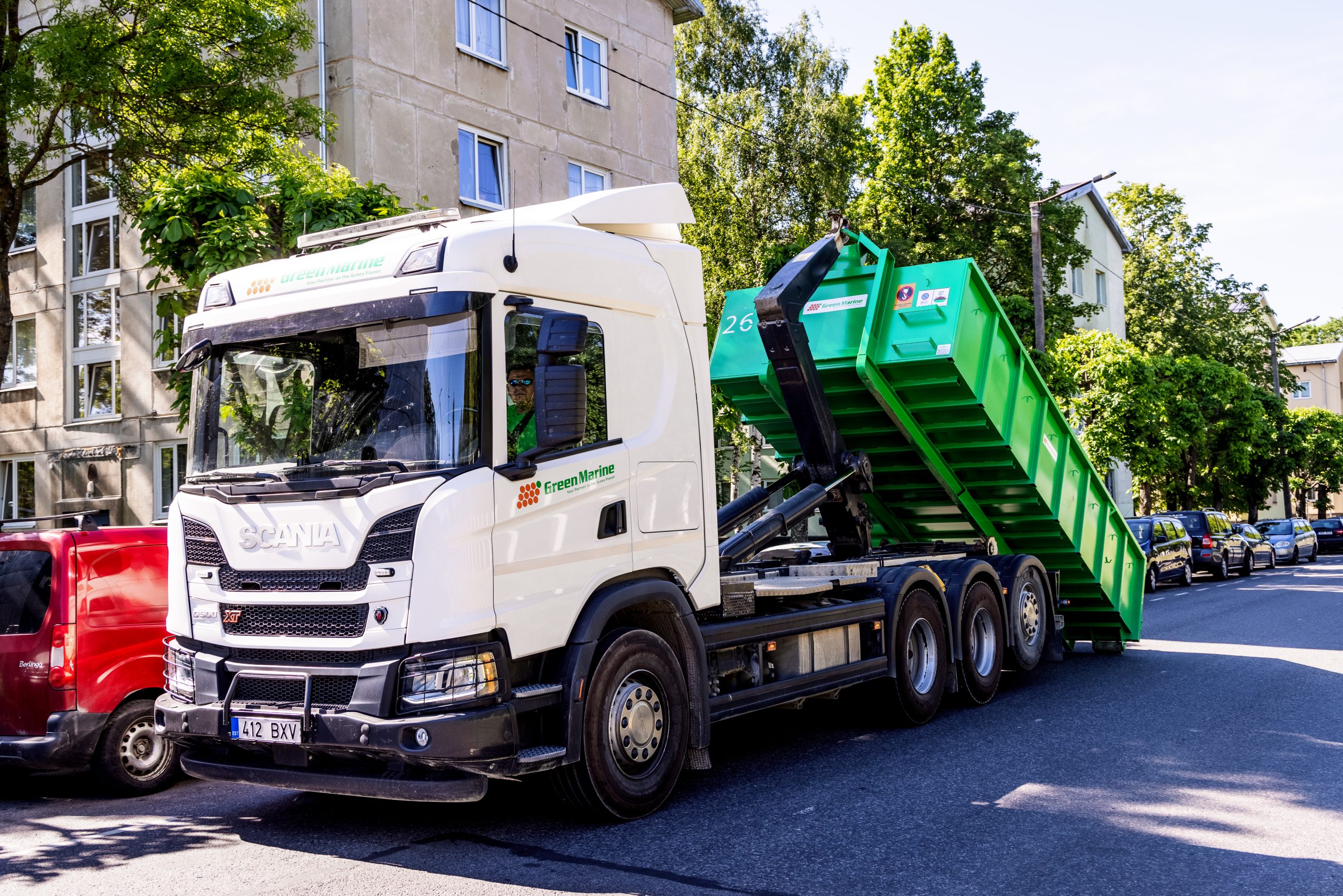
RECEPTION OF CONSTRUCTION WASTE
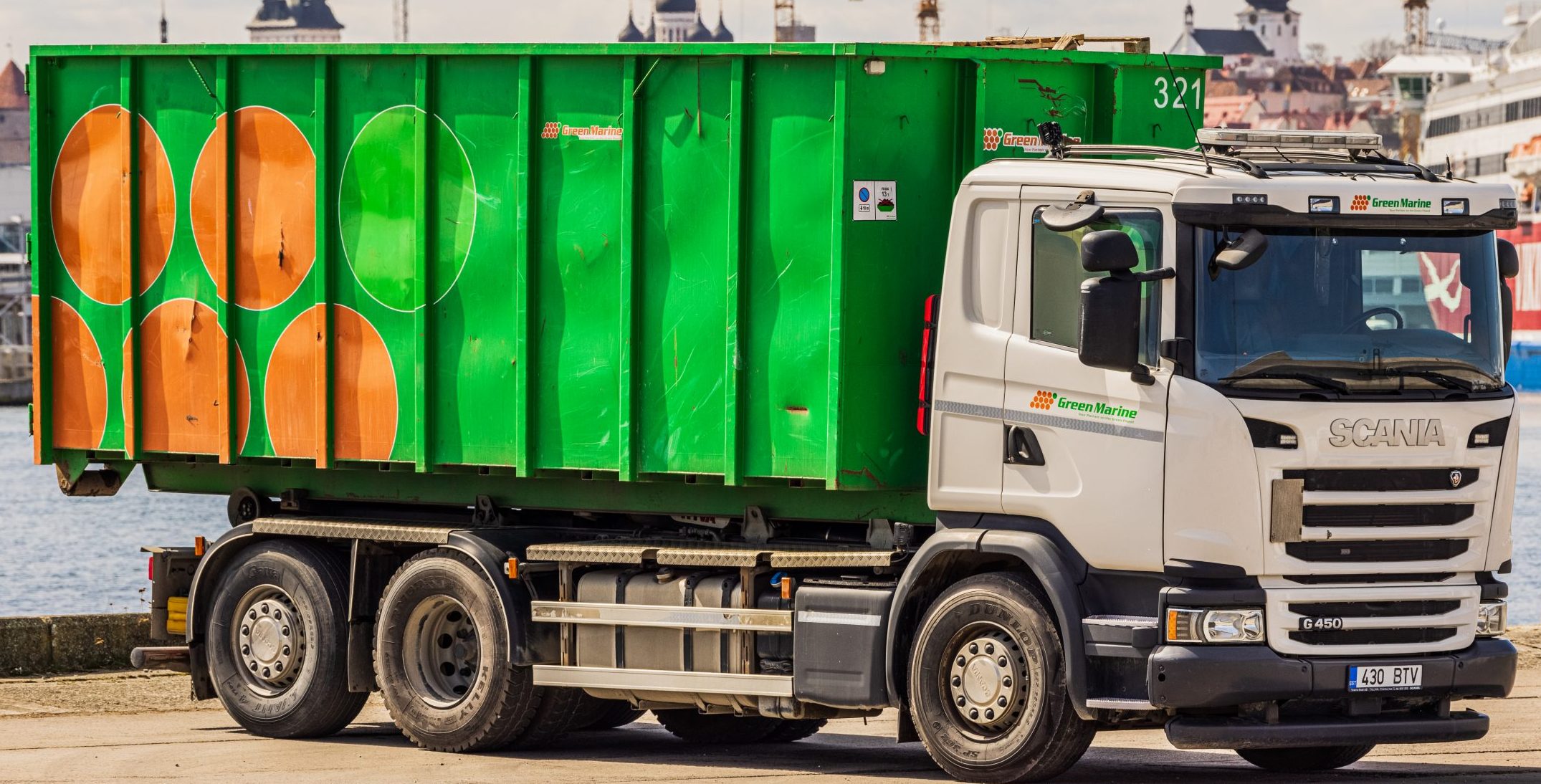
CONTAINER RENTAL AND TRANSPORT

Construction and demolition waste crushing and handling complex
How does it work?
In short, the handling of construction waste on construction sites consists of the following steps.
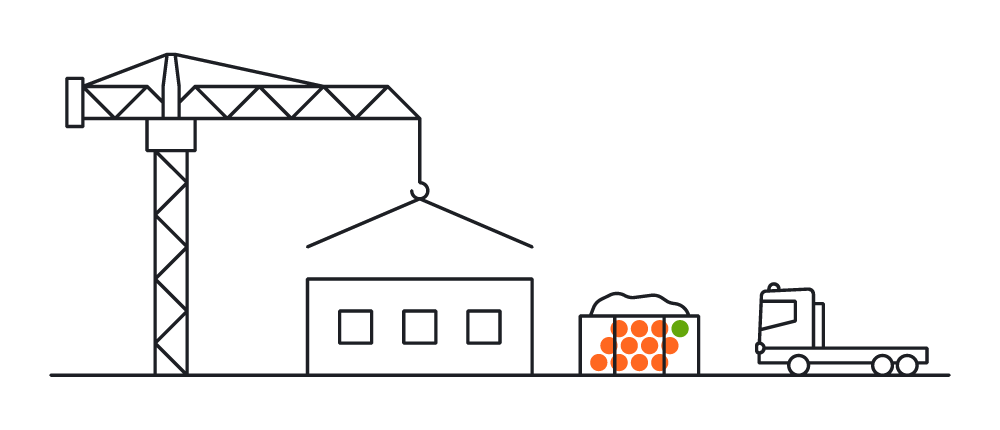
A construction waste container gets full
We will come and pick up the container
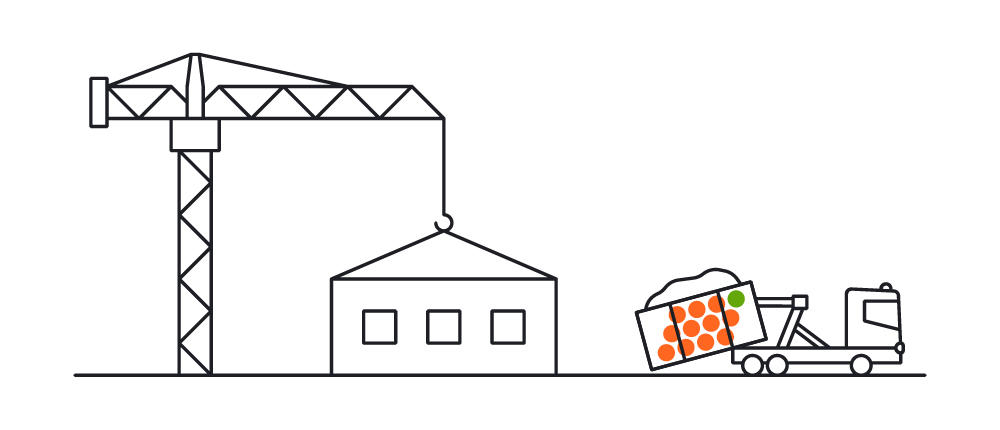

The waste is transported to the final treatment facility for construction and demolition waste
What is construction waste?
Entrust us to handle your construction waste. Green Marine cares deeply about the environment. Our experienced and professional team will handle your construction waste in the best possible way.
Construction waste
Construction and demolition waste is waste resulting from the construction, demolition, renovation or restoration of a building or its parts. Construction waste must be sorted at source – this is the most affordable solution that helps save the environment and allows for the recovery of as much waste as possible. Given the fact that sorted construction waste is suitable for recovery, it is prohibited to dispose of it in a landfill.
The types of construction waste include the following.
- Mixed construction waste is unsorted construction waste generated during the construction of new buildings which must be sorted before recovery.
- Wood waste is sawdust, including wood dust, shavings, cuttings, wood, particle board and veneer, waste bark and cork.
- Paper and cardboard must be dry and not film-covered.
- Plastic waste includes film, polystyrene foam, plastic windows, and other kinds of construction plastics.
- In the sorting of metallic wastes, black and non-ferrous metals must be separated.
- Mineral waste includes stones, building stones and bricks, plaster, concrete, gypsum, sheet glass, etc.
- Reinforced concrete and other concrete waste, including kerbs, must be sorted separately to allow them to be delivered for crushing and recovery.
- Asphalt not containing tar that is classified as non-hazardous waste must also be sorted separately as it can be recovered after crushing.
- Garden and park waste is biodegradable waste generated during garden and park maintenance, including branches, mowed lawn, leaves, leftover soil, etc.
- Concrete, stone and soil are bulk materials that can be recovered after appropriate reprocessing.
Management of hazardous waste
Green Marine is your trusted partner in hazardous waste management and transport. We have all the necessary approvals and permits to do the job, as well as extensive experience and the best working methods available.
Hazardous construction waste should be collected separately from other types of waste. Hazardous construction waste includes waste containing asbestos, organic solvents and oil shale products, as well as soiled materials and impregnated wood.
- Construction wastes containing asbestos are, for example, asbestos-containing cement pipes and tiles, thermal insulation, heating system insulation, etc.
- Organic solvents are present in paint, varnish, adhesive and resin wastes which can damage both human health and the environment.
- Construction waste that contains oil shale products includes tar, tar paper, asphalt containing tar, and impregnated insulation materials, among other things.
- Soiled materials from construction are, for example, used personal protective equipment, construction and finishing material packaging, rags, etc.
- Impregnated wood categorised as hazardous construction waste includes railway sleepers, street light poles, and wood treated with protective products.
Solid hazardous waste is collected into hermetically sealed containers with a capacity of 15–30 m3. Pumped hazardous waste is collected into a collection tank of a truck with a capacity of up to 30 m3.
Entrust us with the management of hazardous waste. We promise that this will be done according to your individual needs and the existing environmental requirements.
Management of packaging waste
Green Marine also offers packaging containers for construction sites. We will swiftly deliver the packaging waste container to your desired location and later we will also come and remove it. We have all the necessary approvals and permits to do the job, as well as extensive experience and the best working methods available.
We offer packaging containers with a capacity of 0.66 m3 or 1.1 m3 and smart containers with a capacity of 2.5 up to 4.6 m3
The following clean packaging may be disposed of in the packaging container.
- Plastic packaging – for example, clean packaging for finishing materials, clean liquid soap packaging, single-use plastics, plastic food packaging, and other clean plastic packaging.
- Glass packaging – for example, coloured and colourless glass bottles, all glass bottles, jars and clean glass packaging without a deposit emblem.
- Metallic packaging – for example, metal lids and caps of food and drink packaging, canned food packaging.
- Drink cartons – for example, cartons for milk and juice, as well as other clean cartons packaging.
- Paper and cardboard packaging – for example, cardboard boxes and cases, paper bags and other clean paper packaging.
Treatment of soil pollution on a construction site
Greene Marine is your reliable partner in soil pollution treatment and transport. We have all the necessary approvals and permits to do the job, as well as extensive experience and the best working methods available.
In general, there are two ways for soil pollution to occur on construction sites.
- Graptolitic argillite pollution
A graptolitic argillite layer may be exposed during earthworks or the establishment of a construction site, which becomes unstable upon contact with air and water. Spontaneous combustion and leaching of argillite can result in damage to human health and the environment. Argillite exposed to atmospheric conditions must be treated on-site or handed over to us as a waste to be delivered to a treatment facility within two weeks. We can help you handle argillite in a safe manner and provide advice on how to use graptolitic argillite as an aggregate.
- Introduction of hazardous waste into soil or a water body
Residual pollution on construction sites can also occur, for example, when chemicals, and hazardous wastes from finishing or solvents are introduced into the soil. We have extensive experience and top-class equipment for eliminating soil pollution quickly and conveniently.
We also locate and eliminate water pollution. We pump liquid waste out of the water body and transfer it to a waste oil treatment facility.
Pollution on construction sites must only be eliminated by a reliable and experienced partner.
We promise that in this process, Green Marine will take all your individual needs and environmental requirements into consideration.
We have 20 years of experience in the waste management sector, and our operations comply with the standards of ISO 9001 and ISO 14001.
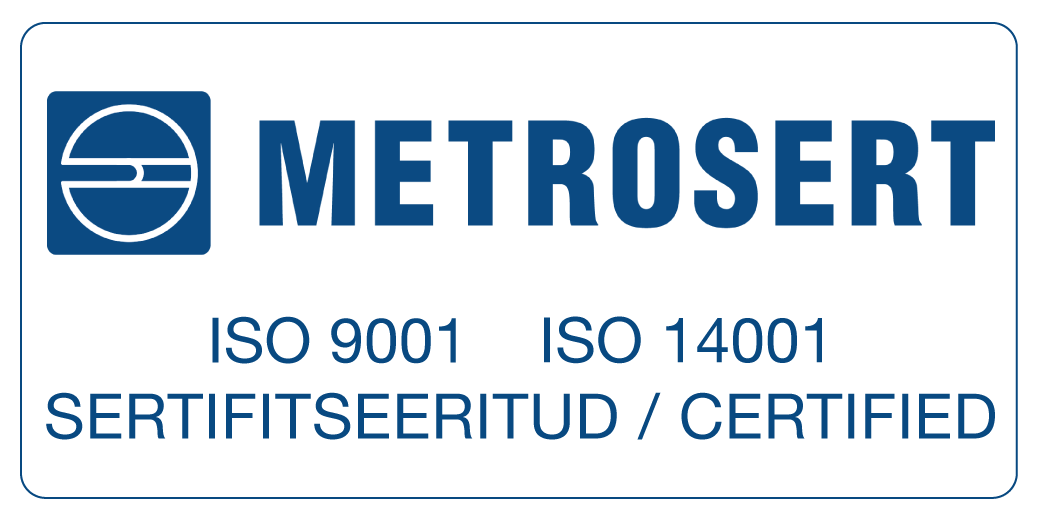


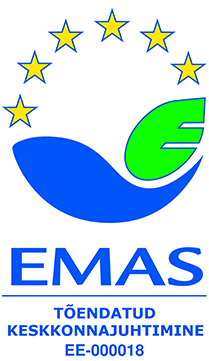
Interested in our services?
Send us an enquiry – greenmarine@greenmarine.ee. We will be happy to assist you.
Contact us